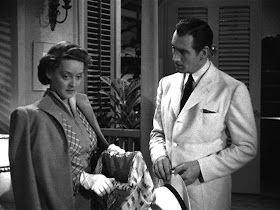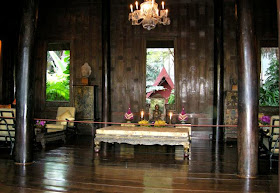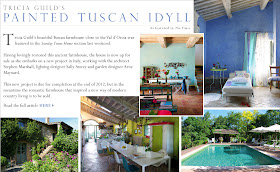Dashing society guy; designer; government spy; divorced man; eccentric visionary; successful
businessman. It’s a list that reads like a description of a character in a
steamy novel or a good thriller that gets turned into a movie in the genre of “White
Mischief” or “The Letter” or even “Out of Africa.”
 |
| The Letter |
He was an
American businessman who in the 1950s and 1960s was the most famous American
living in Asia. “Time” magazine claimed that he "almost single handed saved
Thailand's vital silk industry from extinction".
James Harrison Wilson Thompson was born (March 21, 1906) in Greenville, Delaware.
He was the youngest of five children of Henry and Mary Thompson. His father was
a wealthy textile manufacturer; his mother was the daughter of James Harrison Wilson (1837 - 1925), a noted Union general during the American Civil War.
 |
| Dashing society guy; designer; government spy; divorced man; eccentric visionary; successful
businessman |
Thompson spent his early years of education at St. Paul's boarding school. He
graduated from Princeton University in 1928. Post-graduate studies followed at
the University of Pennsylvania’s School of Architecture, but he did not
complete his degree. From 1931 to 1941, he practiced in New York City with
Holden, McLaughlin & Associates, designing homes for the East Coast rich
and a band shell in Rehoboth Beach, Delaware.
 |
| From The New Yorker in 1934 - "Talk story about ready-made houses, exhibited at the Industrial Arts
Exposition, these "prefabricated" dwellings are made at the factory and
merely bolted together at the site of the construction. Holden
McLaughlin and Associates, who designed and made the one at the exhibit
have already sold a number of them." |
He led a very active glamorous social life in the 1930s, and sat on the board
of the Ballet Russe de Monte Carlo. He also became politically active, but his
liberal politics alienated him from his conservative family.
 |
| Ballet Russe 1938 - Perhaps the exoticism attracted Jim Thompson |
In 1941, he quit his design job and enlisted with the Delaware National Guard regiment.
He became a commissioned officer shortly after the Japanese attack on Pearl
Harbor. At the height of the Second World War, Thompson was recruited to serve
in the Office of Strategic Services (which in 1947 was disbanded in place of
the newly formed Central
Intelligence Agency).
 |
| Candidates for the Office of Strategic Services (OSS) learn how to set
up radio antennae. National Archives and Records Administration photo |
His first assignment was with the French resistance forces in North Africa. He
was then sent to Europe. After Victory in Europe Day, he was transferred to
Ceylon (now Sri Lanka). He was assigned to contact the pro-Allied Seri Thai or
Free Thai Movement, which was planning an uprising against the occupying Japanese Army. In August
1945, Thompson was about to be sent into Thailand, when the Surrender of Japan
officially ended World War II. He arrived in Thailand shortly after Victory over
Japan Day and organized the Bangkok OSS office. In the spring of 1946, Thompson
went to work as military attaché at the United States legation for his former Princeton
classmate Charles Yost, the U.S. Minister to Thailand. Thompson used his
contacts with the Free Thai and Free Lao groups to gather information and
defuse conflicts on Thailand's borders.
Working with him
in the Legation was Kenneth Landon, an American missionary
whose wife, Margaret Landon, was the author of “Anna and the King of Siam,”
which was the inspiration for the 1946 movie of the same name, and then the
original Broadway production of “The King and I” in 1951.
 |
| Thai silk weavers in the 1940's |
 |
| Jim Thompson with a silk worker in Thailand |
Thompson left the army in 1946. After his divorce, he devoted himself to
revitalizing a cottage industry of hand-woven silk in Thailand. In 1948, he
partnered with George Barrie to found the Thai Silk Company. The establishment
achieved a coup in 1951 when designer Irene Sharaff made use of Thai silk
fabrics for the Rogers and Hammerstein musical, The King and I. From then on,
the company was on the map and prospered.
 |
| Th King and I - The silk from Jim Thompson's company was used |
I was reminded
of the story of Jim Thompson when I was asked by a textile conservator to
source a striped silk fabric for a vanity stool from the 1960s being restored
for The Historic New Orleans Collection. The age-destroyed fabric reminded me
of the silks Jim Thompson had produced, and I was lucky enough to find a
vintage remnant from the 1960s just big enough for recovering the seat.
 |
| I was asked to find a silk fabric to replace this |
The conservator
is dying the fabric to match the original. It is a fascinating process. A new
fabric would be acceptable, but somehow using a vintage fabric is more special.
The conservator did her own research on Jim Thompson and was amazed by his life
story, and sent me some of the tidbits I now share with you. She was so excited
and asked if I knew who he was. I did know the broad strokes, but her detailed
information made me appreciate the incredible man and his life (and want to
turn it into a movie).
 |
| Jim Thompson went native in Thailand |
Jim Thompson
loved Thailand. He went native in many ways. Thompson was unlike any
other figure in Southeast Asia. He was an American, an ex-architect, a retired
army officer, a one-time spy, a silk merchant and a renowned collector of
antiques. Most of his
treasures, if not all, were amassed after he came to Thailand.
In 1958, he began what was to be the pinnacle of his architectural achievement
– the construction of a new home to showcase his objets d'art. Using parts of
old up-country houses – some as old as a hundred years – he succeeded in
constructing a masterpiece by reassembling six Thai dwellings on his estate. In
his quest for authenticity, he saw to it that some of the structures were
elevated a full floor above the ground. During the construction stage, he added
his own touches to the buildings by positioning, for instance, a central
staircase indoors rather than having it outside. Along the way, he also
reversed the wall panels of his quarters so that it now faced inside.
 |
| Authentically raised off the ground |
After he was through with its creation, he filled his home
with the many items he had collected over the years. Decorating his rooms were
Chinese blue-and-white Ming pieces, Belgian glass, Cambodian carvings,
Victorian chandeliers, Benjarong earthenware, Thai stone images, Burmese
statues, and a dining table once used by King Rama V of Thailand. It took
Thompson almost a year to complete his mansion. It still stands today, now as
one of Bangkok’s most charming
museums. It can also be rented for weddings.
 |
| Along the way, he also
reversed the wall panels of his quarters so that it now faced inside. |
.JPG) |
| Cambodian carvings,
Victorian chandeliers, Benjarong earthenware, Thai stone images, Burmese
statues |
 |
| Sadly, so few images are available of Jim Thompson or his home |
In 1961 Jim Thompson took an afternoon walk in familiar
surroundings near his home in Thailand. He never returned. He disappeared. It
is still one of the greatest unsolved and tragic mysteries. To be continued in
another post….
 |
| Jim Thompson started the Thai Silk Company |
 |
| What happened to the dashing Jim Thompson? |
Hover over any image to Pin it.
Please add my NEW address to your blog list:
http://thevisualvamp.blogspot.com
And please become a Follower again (or for the first time) on this newer VV blog




















































.JPG)


